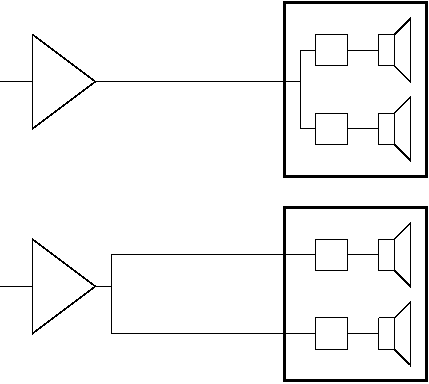hoopsontoast
New member
- Oct 1, 2011
- 12
- 0
- 0
Andrew Everard said:hoopsontoast said:But it doesnt, most crossovers are parallel crossovers, so the only difference is the HF signal (for example) is coming from a seperate speaker terminal. So whether its single wired or bi-wired it makes no difference other than an extra pair of terminals.
In a speaker designed for biwiring/biamping, the crossover should be split into two separate sections, one with a high-pass filter to feed the treble section, the other with a LPF for the md/bass driver (in a simple two-way system). The two sections of the crossover aren't connected at the speaker end, but only right the way back at the amplifier end of the speaker cables. What you seem to be suggesting is that the crossover is unchanged, and that the two sets of terminals are really only there for show, which – at least in a properly-designed biwirable/biampable speaker – isn't the case. If it were, pulling the jumper bars and just connecting one set of cables would result in the speaker still playing normally, which doesn't happen.
But as with all things, the advice is to try it for yourself and/or – if a retailer is suggesting biwiring would be beneficial – ask them to prove it by demonstration.
Please look at the two photos in my previous post, electrically, both the single wired SCM10 and Bi-Wired SCM20 crossovers behave the same.
If you single wired the SCM20 Bi-Wire terminals and used 'jumper' bars, it would still be exactly the same as the SCM10 Single Wired crossover.


